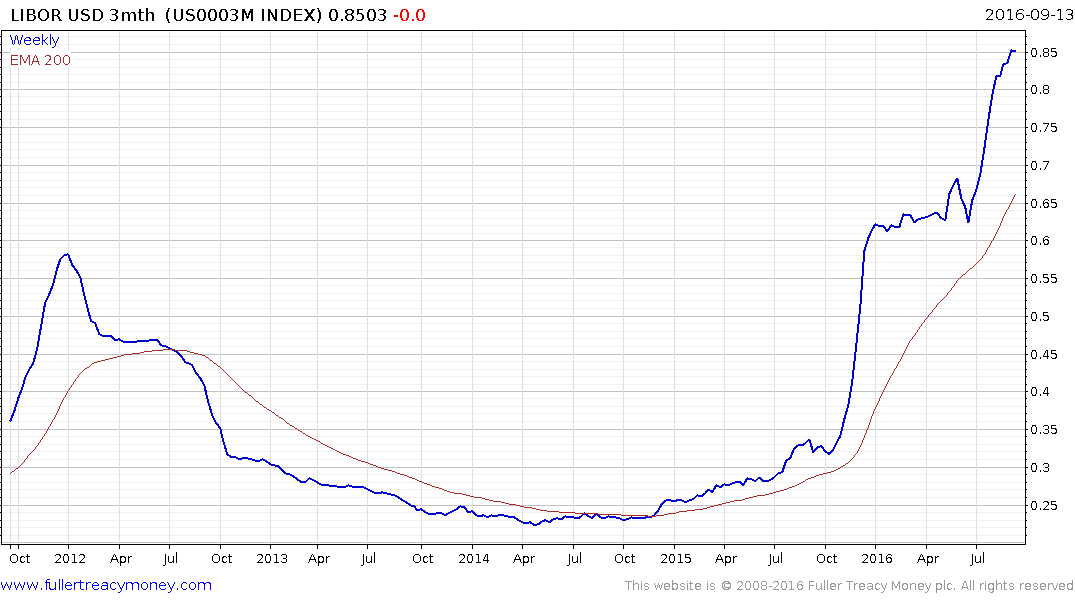There's a $300 Billion Exodus From Money Markets Ahead
This article by Liz McCormick for Bloomberg may be of interest to subscribers. Here is a section:
The transformation of the money-fund industry, where investors turn to park cash, is a result of regulators’ efforts to make the financial system safer in the aftermath of the credit crisis. The key date is Oct. 14, when rules take effect mandating that institutional prime and tax-exempt funds end an over-30-year tradition of fixing shares at $1. Funds that hold only government debt will be able to maintain that level. Companies such as Federated Investors Inc. and Fidelity Investments, which have already reduced or altered prime offerings, are preparing in case investors yank more money as the new era approaches.
And
A major repercussion of the flight from prime funds is that there’s less money flowing into commercial paper and certificates of deposit, which banks depend on for funding. As a result, banks’ unsecured lending rates, such as the dollar London interbank offered rate, have soared. Three-month Libor was about 0.85 percent Wednesday, close to the highest since 2009.
?Libor may stabilize after mid-October because prime funds may begin to increase purchases of bank IOUs, although the risk of a Federal Reserve interest-rate hike by year-end will keep it elevated, said Seth Roman, who helps oversee five funds with a combined $3.2 billion at Pioneer Investments in Boston.
“You could picture a scenario where Libor ticks down a bit,” Roman said. But “you have to keep in mind that the Fed is in play still.”
The transition from fixed NAVs to floating NAVs in the money market fund sector, where only government paper will be eligible to be supported at $1, is a major contributing factor in the surge that has taken place in LIBOR rates this year. With so much uncertainty about how the new system will function investors are understandably skittish about leaving money in the system ahead of the implementation.
However, with the Fed expected to implement a moderate pace of interest rate hikes those same investors may be tempted back into the money markets, by higher yields, once the full effects of the change are better understood.

However since LIBOR has already completed its base, any pullback in borrowing costs is unlikely to see rates fall all the way back down to their lows.


